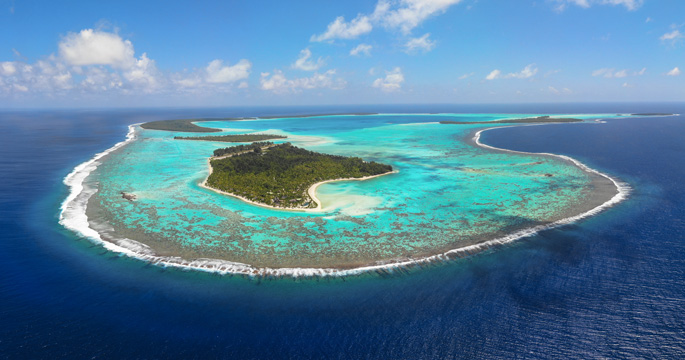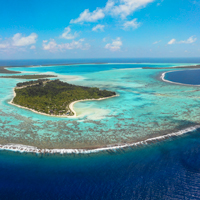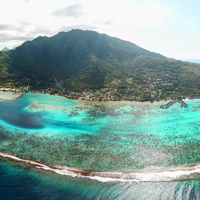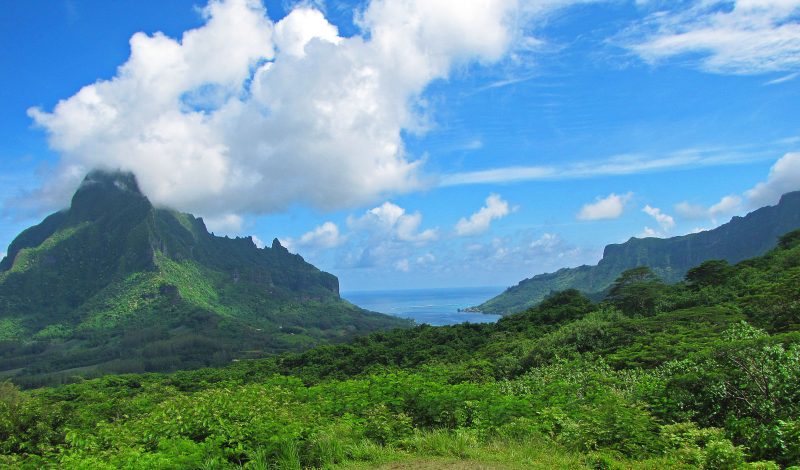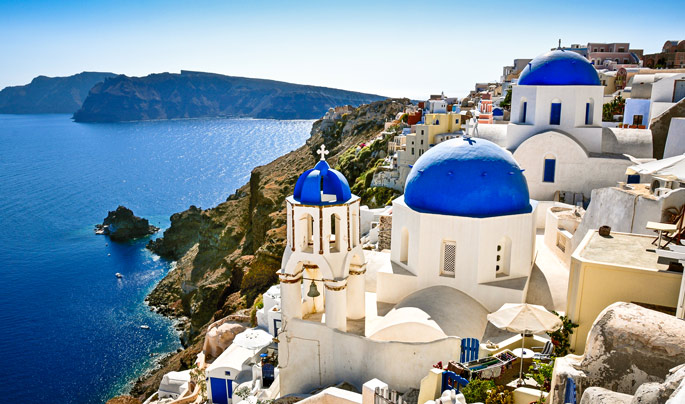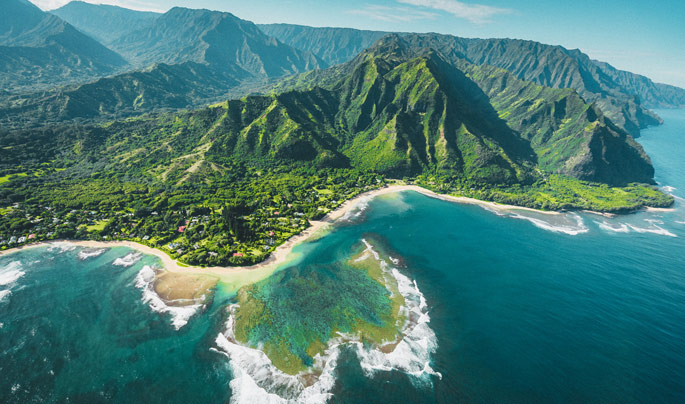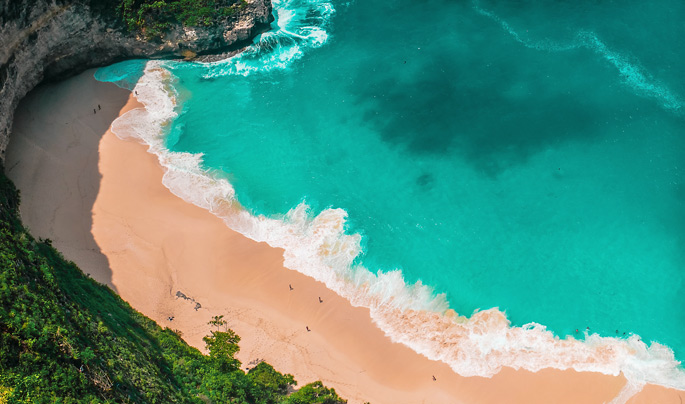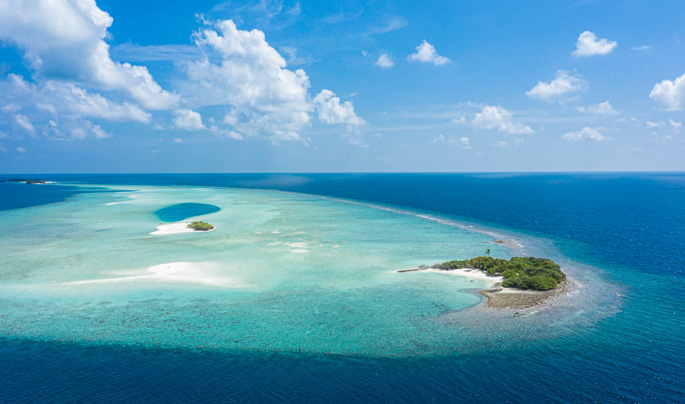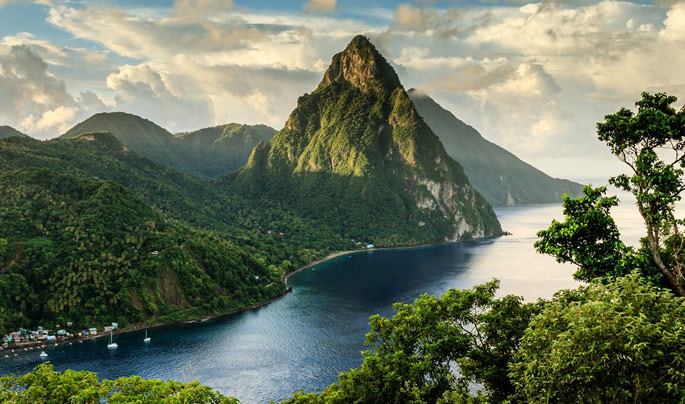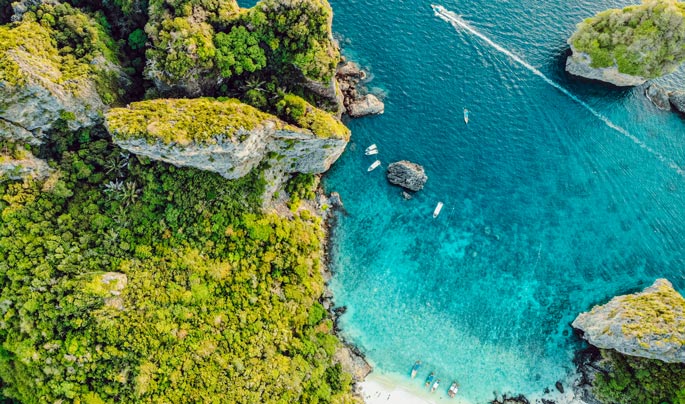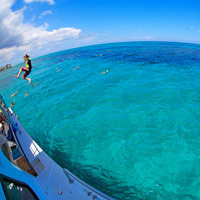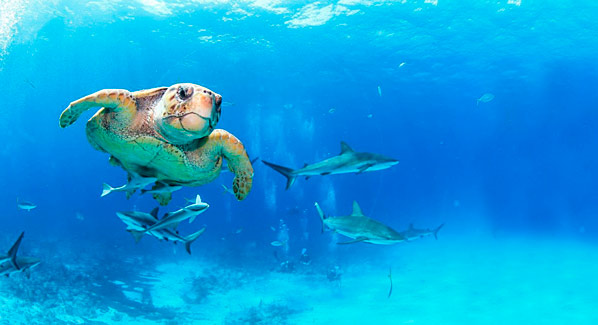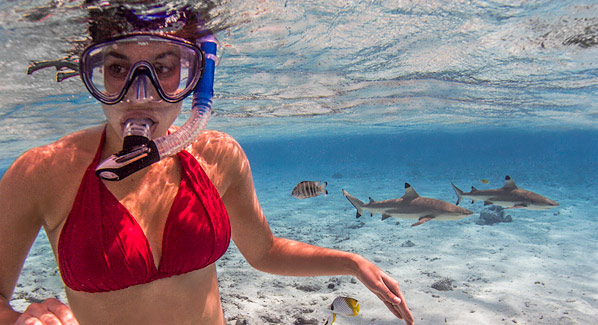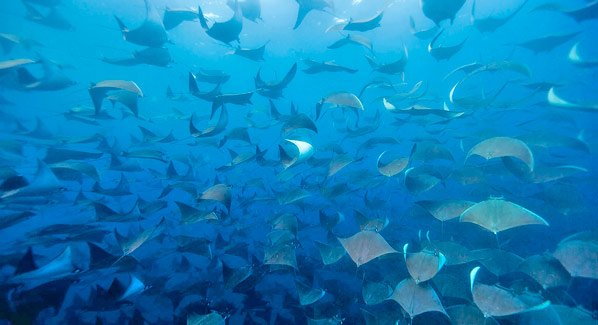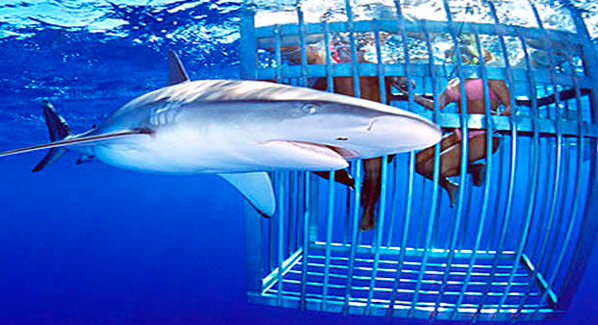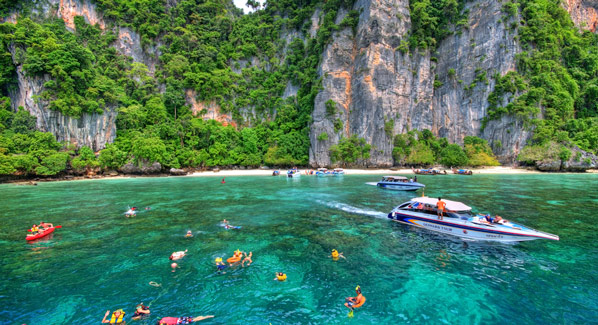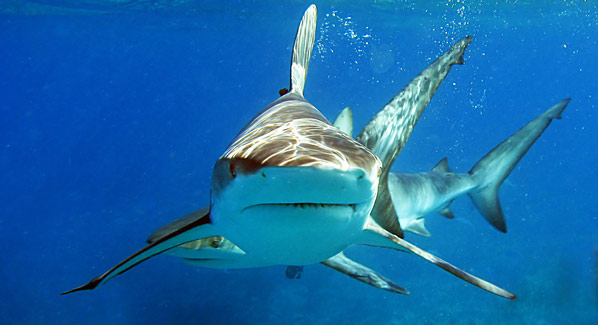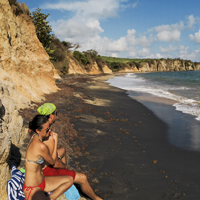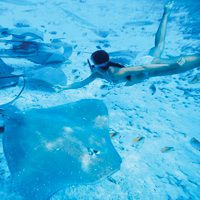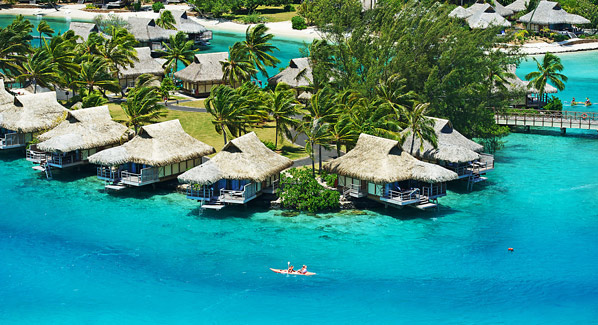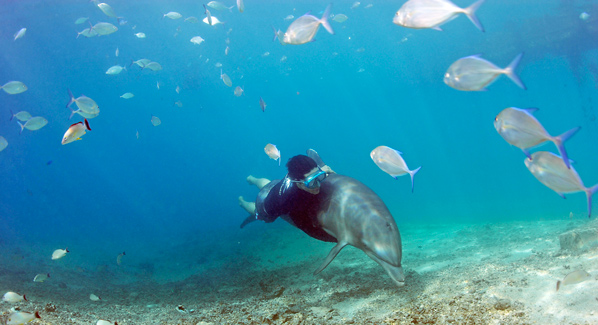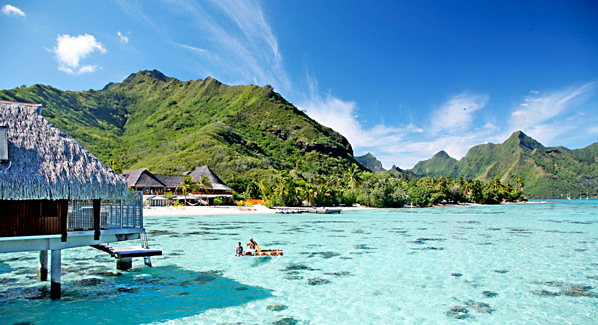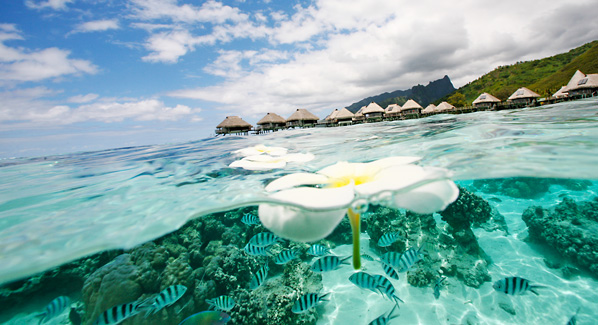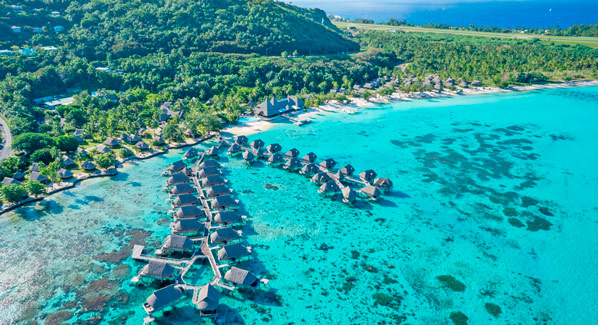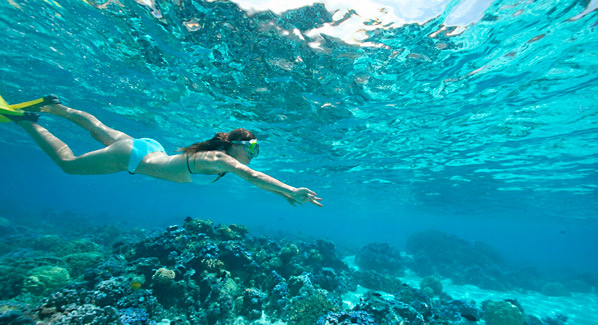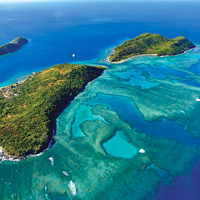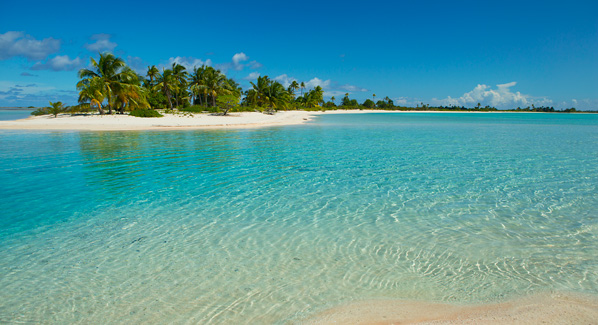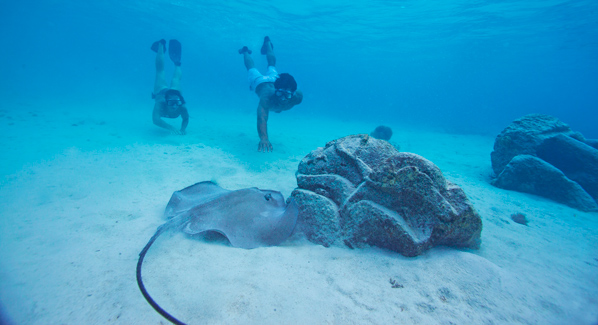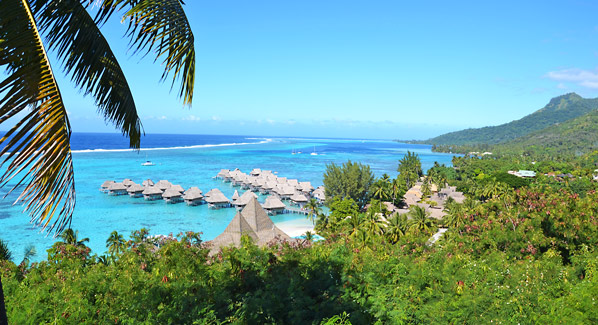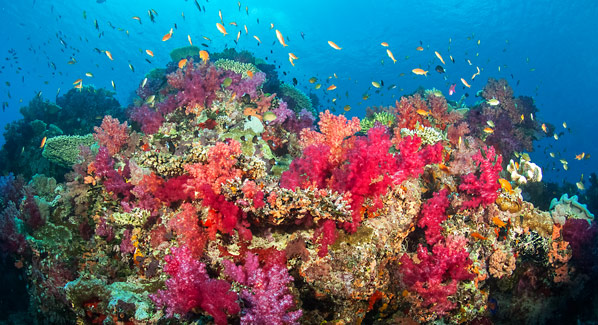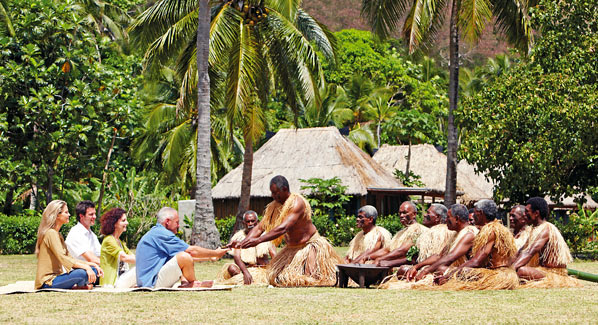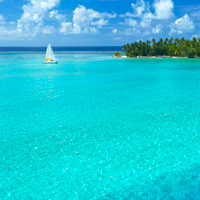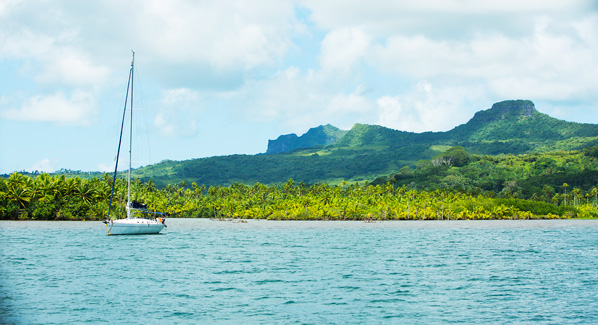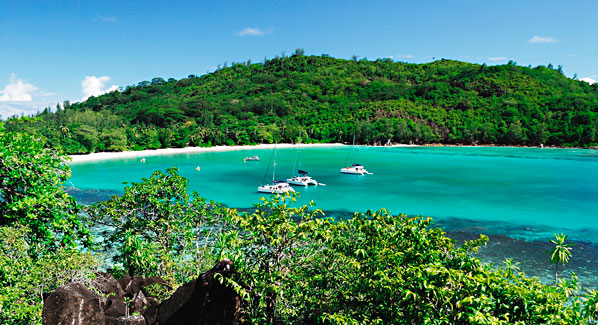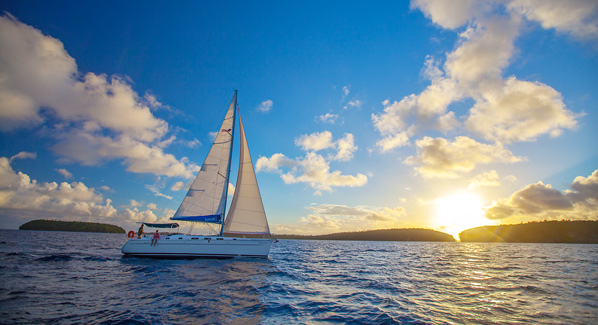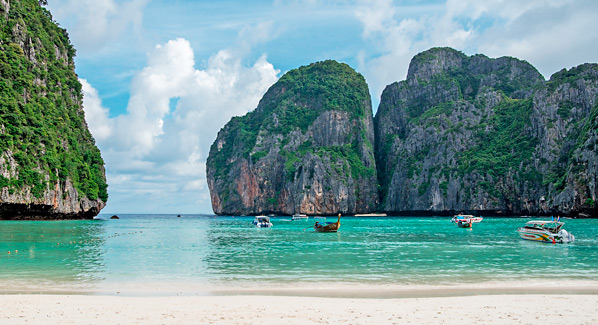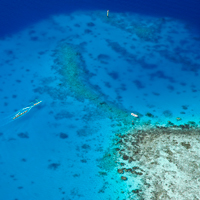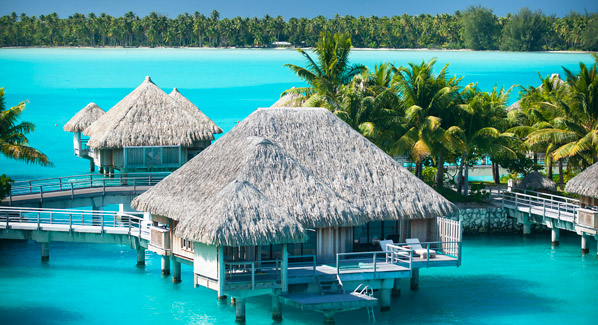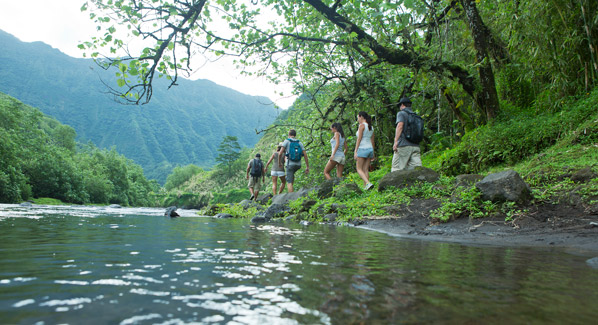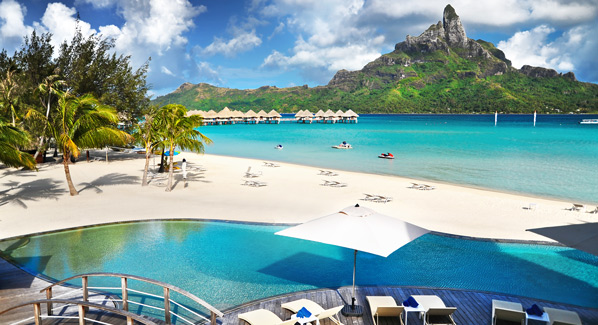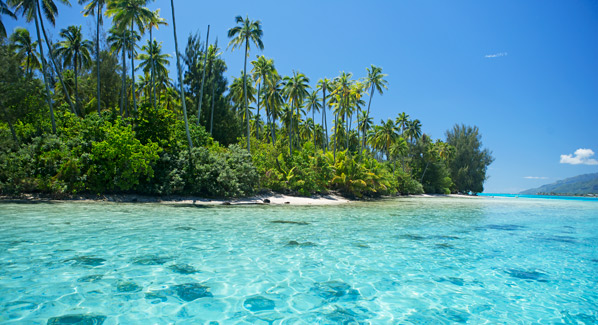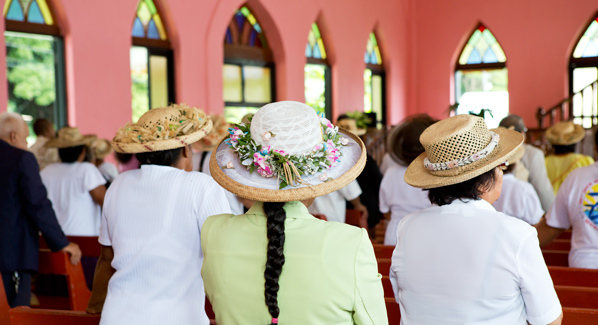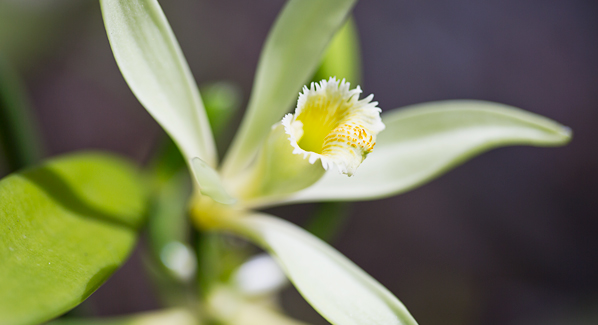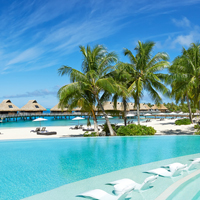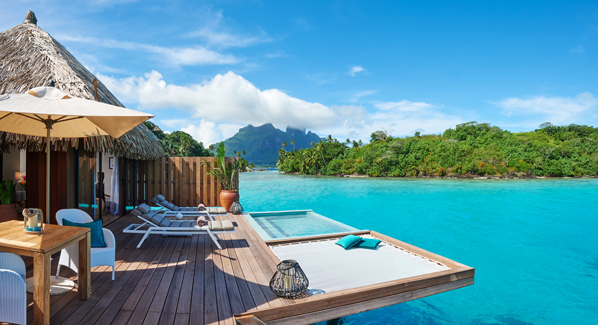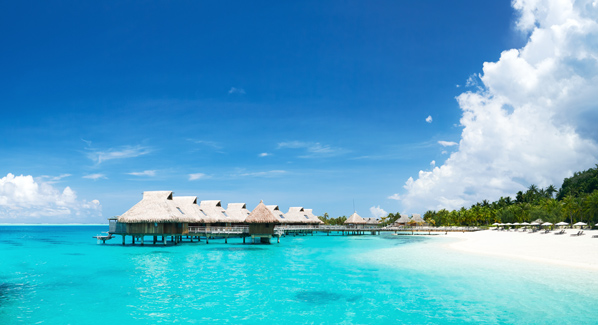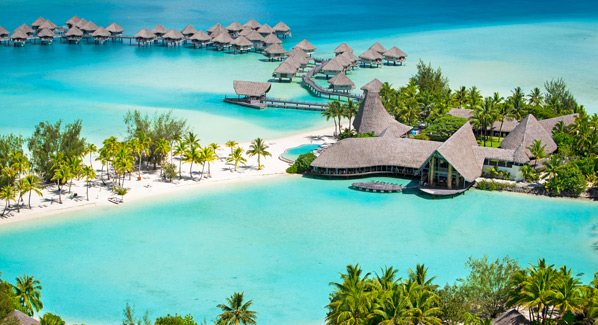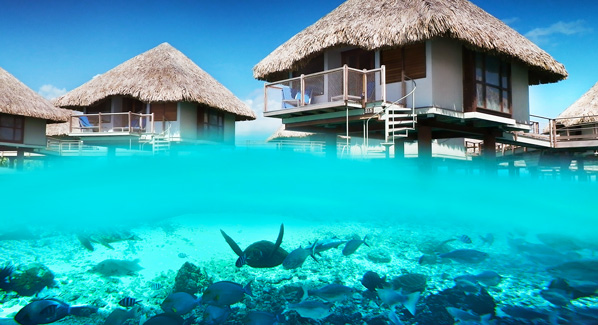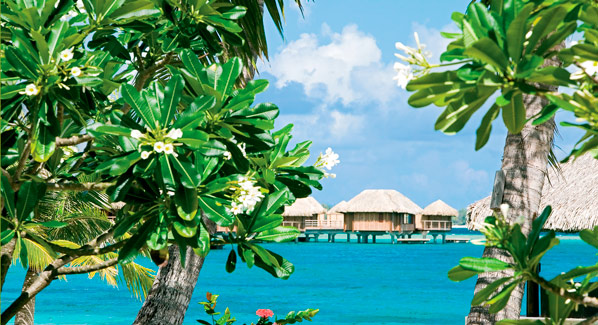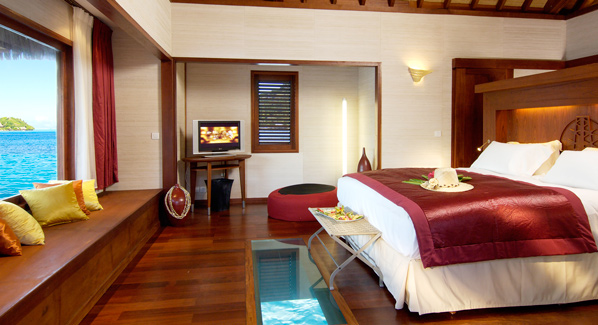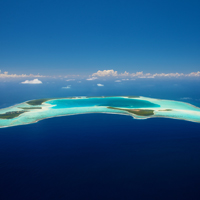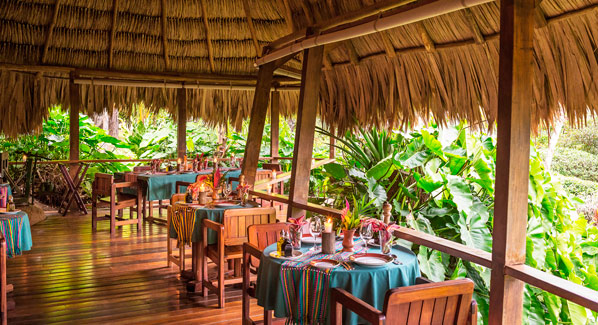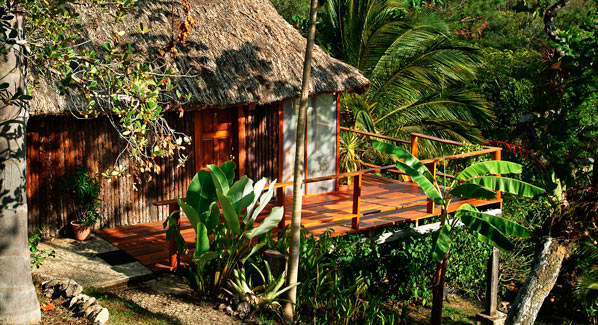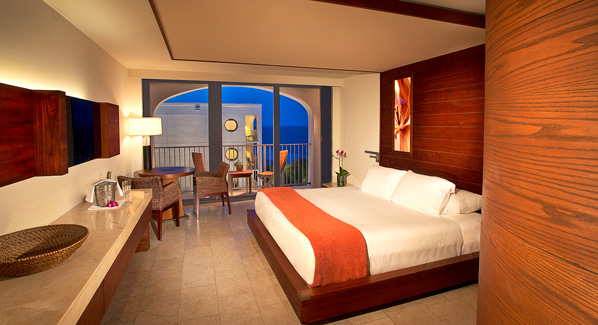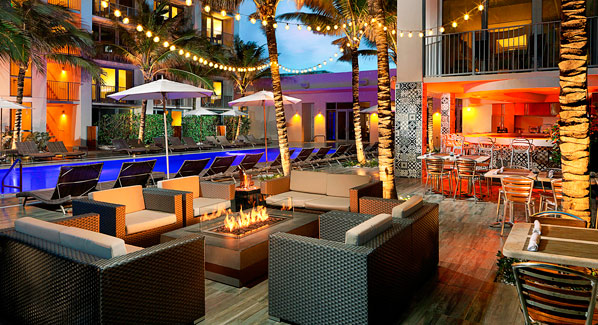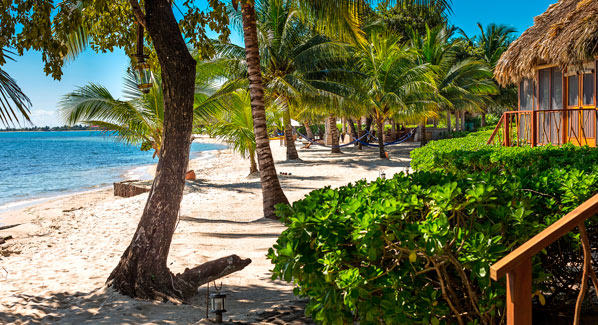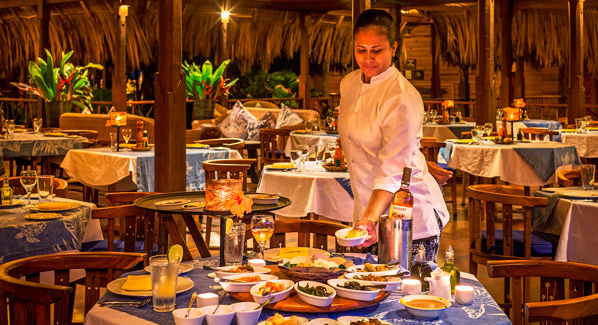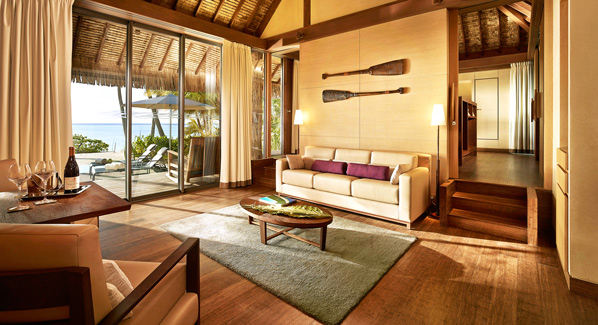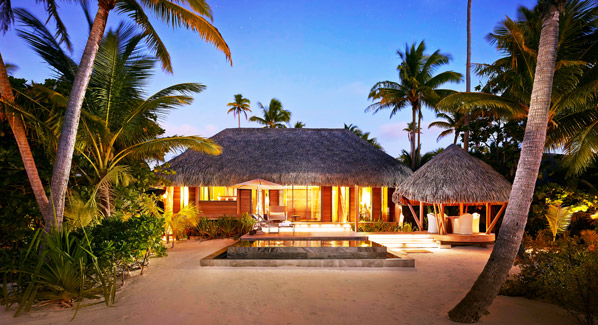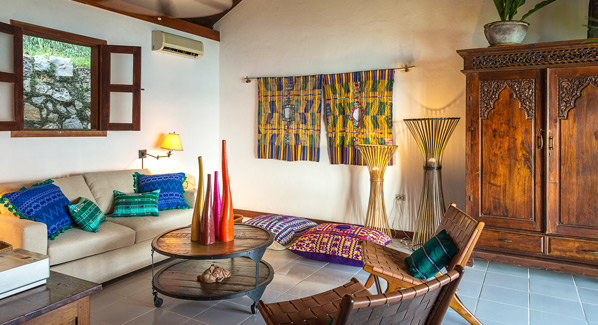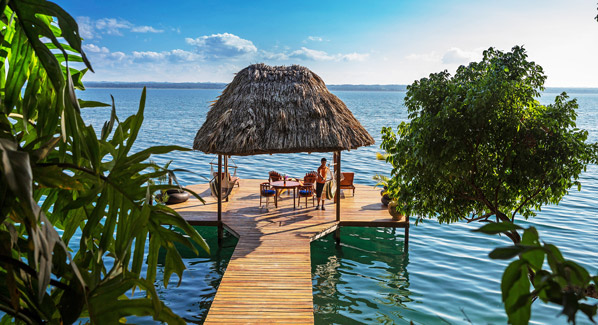Tropical islands present an endless range of photographic opportunities. But one perspective that is rarely shown is the view from directly overhead. A look down at these favorite places reveals a new dimension to the destination and showcases the incredible clarity of the water. It’s a phenomenon these talented photographers have discovered and shared.
A Royal Legacy
Pierre Lesage flew a drone over blue Pacific waters to capture this panoramic image of The Brando Resort, which sits on the private French Polynesian island of Tetiaroa. As director of sales and marketing for the resort, Pierre had a unique opportunity to document this iconic property, which is set in a sparkling lagoon some 30 miles northeast of the island of Tahiti. Tetiaroa, which was once the playground of the royal family of Tahiti, was bought by Marlon Brando in 1965 when he was filming the Mutiny on the Bounty. His goal when purchasing the island was to preserve it for future generations.
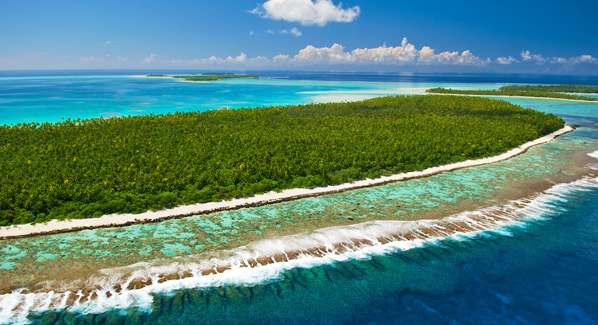
Aerial coastline of Tetiaroa. Photo: The Brando/Tim McKenna @timmckenna
Down Under From Above
Photographer Will Turner waited until sunset to launch his drone above the rocky shoreline of the Shelly Beach headlands, which sit at the edge of Australia’s Sydney Harbour National Park. “The water was crystal clear and the trees were red as fire,” he writes, “making this awesome composition.” The sheltered waters of Shelly Beach are popular with swimmers and snorkelers, while surfers favor nearby Manly Beach, which was the site of the first World Surfing Championship in 1965. A favorite day trip to Manly from downtown Sydney begins with a half-hour ferry ride that takes in famous sites such as the Sydney Opera House and the Sydney Harbour Bridge.
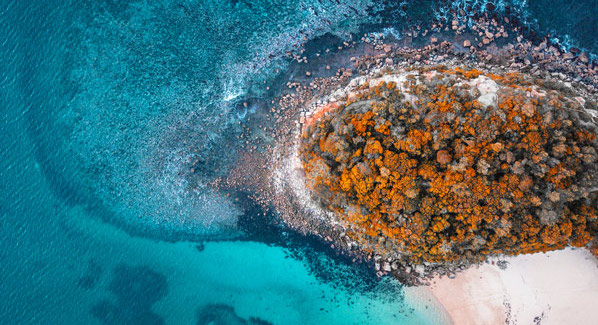
Bird’s-eye view of rocks at Shelly Beach, Manly, Australia Photo: Will Turner/ Unsplash @turner_imagery
Worth The Effort
When prepping for a trip to the Islands of Fiji, Jay Daley wasn’t sure he wanted to go through the hassle of packing his favorite photo drone. “I was jetting off to the little tropical island to relax,” he says. “Lugging a large drone through checked luggage, and customs, and getting it to and from the resort didn’t seem like a relaxing idea.” But in the end, the drone came along, and Jay was glad it did. “There was a huge coral reef right at my doorstep and kayaks ready to go.” The drone flew, and the result was this evocative image of a snorkeler dwarfed by huge coral formations.
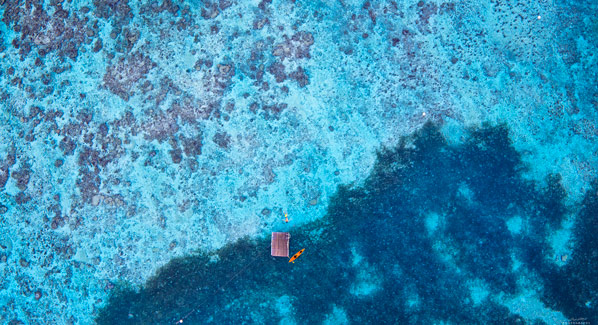
Coral reef from the Islands of Fiji. Photo: Jay Daley/Flickr
A Liquid Gem Set In Stone
Falassarna Beach is considered one of the most beautiful stretches of shoreline on the Greek Island of Crete, and it’s been the subject of countless photo shoots over the years. So when Athens-based multi-media producer Filippos Sdralias set out to create some aerial images of the coast, he wanted to show a different facet of Falassarna. Instead of focusing the lens on the warm sands of the beach, he flew his drone above a rock-strewn area at the edge of the strand to document the enticing turquoise waters of this shallow, boulder-lined pool.
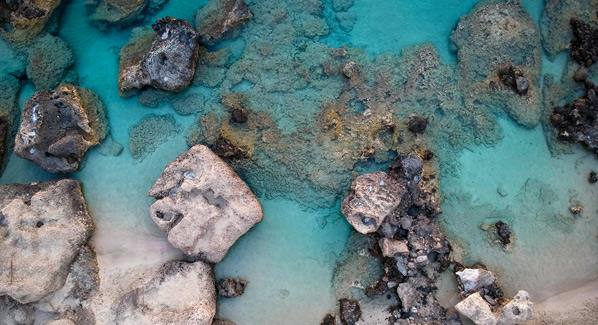
Rocks of Falassarna, Greece. Photo: Filippos Sdralias/ Unsplash @filippos_sdr
Flight To A Distant Haven
This bird’s eye view of the coral reefs surrounding Laysan Island comes from U.S. Coast Guard Lieutenant Commander (ret.) Kevin Cooper. This remote outpost is located in the Northwest Hawaiian Islands, some 900 miles from Honolulu. The photo was taken during an overflight of the island in 2016. It shows the reefs to be in good health, but this wasn’t always the case. Laysan was historically exploited by guano miners and overrun by invasive species. Decades of reclamation efforts by the U.S. Fish and Wildlife Service have since restored most of the island’s natural order, and it is now protected under the Hawaiian Natural Life Act.
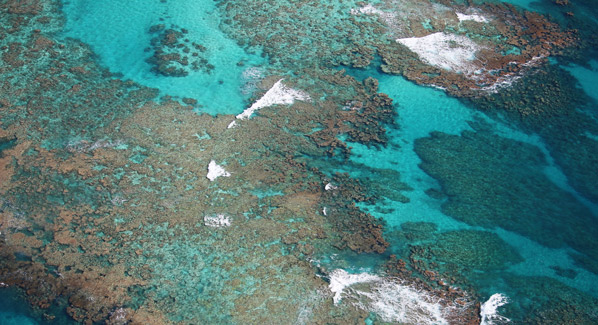
Laysan Island overflight, Northwest Hawaiian Islands. Photo: Kevin Cooper/Flickr
Phuket In Mid-Day Light
The crystal-clear waters of Thailand’s most famous island, Phuket, draw visitors from around the world. It’s easy to see the allure in this overhead view by Giuliano Di Paolo, who focused on the rocky shoreline near the island’s southern point at Promthep Cape. The cape is one of the most photographed locations in Phuket, but most shooters wait until sunset to visit. By shooting in mid-day sunlight Di Paolo brought out the full vibrance of the water. He is a Milan-based media creator who is fascinated with Thailand and often turns his lens to subjects such as elephants, temples, and local people.
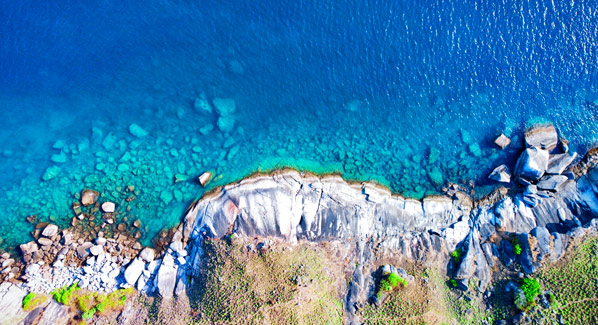
Phuket, Thailand. Photo: Giuliano Di Paolo/Unsplash @giulianodipaolo
Sailing A Coral Coast
The Maldives is a nation of 1,200 small islands set in 3,500 square miles of coral reef. To capture the impressive scale of these formations, Hassan Ishan took a high-altitude look at a traditional dhoni sailing vessel making its way along the edge of a massive ridge of coral that’s visible in the clear water. Dhonis are the workhorses of Maldivian maritime commerce, serving as everything from fishing boats to cargo vessels and inter-island ferries. Ishan is a self-taught Maldivian photo pro known for creating surreal images that capture the unique beauty of his homeland. His work has inspired many younger photography enthusiasts to get into the field.
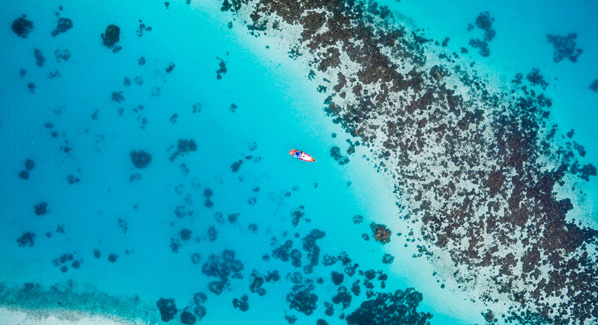
Sailing boat in the Maldives. Photo: Ishan/Unsplash @seefromthesky
Lighting The Way
Mariners in the Turks &Caicos have learned to navigate the extensive network of channels and shoals that surround these islands based on water color. Sapphire and aquamarine waters signal “go ahead,” while light green or tan warns of shallow depths that could spell trouble. Filmmaker Romello Williams perfectly captures this phenomenon with an overhead shot of a speedboat transiting a tidal creek set between a sandbank and a seagrass meadow. A native of Grand Bahamas now living in the Turks & Caicos, Williams says his work is heavily influenced by his island upbringing.
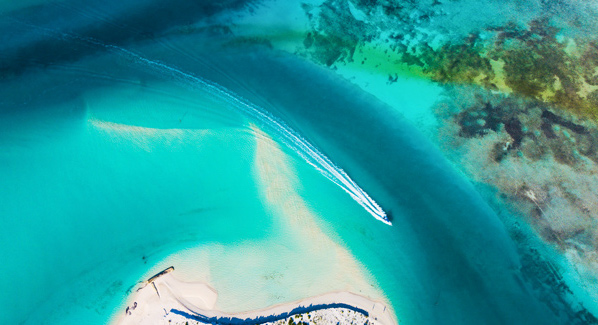
Turks & Caicos Islands. Photo: Romello Williams/ Unsplash @romello

